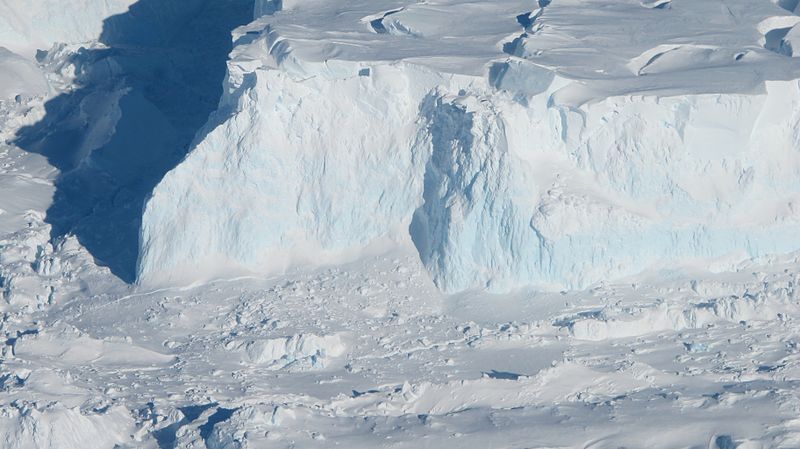 Thwaites Glacier
Thwaites Glacier
Doomsday Glacier: Rapid retreat appears to be driven by different processes under its floating ice shelf
The rapid retreat of Thwaites Glacier in West Antarctica, which is nicknamed the Doomsday Glacier, appears to be driven by different processes under its floating ice shelf than researchers previously understood.
Novel observations from where the ice enters the ocean show that while melting beneath much of the ice shelf is weaker than expected, melting in cracks and crevasses is much faster.
Despite the suppressed melting the glacier is still retreating, and these findings provide an important step forward in understanding the glacier’s contribution to future sea-level rise.
Two papers in the journal Nature this week (15 February 2023) provide a clearer picture of the changes taking place under the glacier, which is the size of Great Britain or the US state of Florida and is one of the fastest changing ice-ocean systems in Antarctica.
Results show that although melting has increased beneath the floating ice shelf, the present rate of melting is slower than many computer models currently estimate.
A layer of fresher water between the bottom of the ice shelf and the underlying ocean, slows the rate of melting along flat parts of the ice shelf.
But the authors were surprised to see the melting had formed stair-case-like topography across the bottom of the ice shelf. In these areas, as well as in cracks in the ice, rapid melting is occurring.
Thwaites Glacier is one of the fastest changing glaciers in Antarctica: the grounding zone — the point where it meets the seafloor — has retreated 14 km since the late 1990s.
Much of the ice sheet is below sea level and susceptible to rapid, irreversible ice loss that could raise global sea-level by over half a metre within centuries.
The new data were collected as part of the MELT project, one of the projects in the UK-US International Thwaites Glacier Collaboration, one of the largest international field campaigns ever undertaken in Antarctica.
The MELT team undertook observations of the grounding line (where the ice first meets the ocean) beneath the Thwaites Eastern Ice Shelf in order to understand how the ice and ocean interacts in this critical region.
Dr Peter Davis of the British Antarctic Survey (BAS) took ocean measurements through a 600m deep borehole around two kilometres from the grounding line, created by a hot water drill in late 2019.
These measurements were compared with melt rate observations taken at five other sites underneath the ice shelf.
Over a nine-month period, the ocean near the grounding line became warmer and saltier but the melt rate at the ice base averaged 2-5 m per year: less than previously modelled.
Dr Britney Schmidt, of Cornell University in the US, and a team of scientists and engineers deployed a robot called Icefin through the 600m deep borehole. The vehicle is designed to access such grounding zones that were previously almost impossible to survey.
The observations Icefin made of the seafloor and ice around the grounding zone provide more detail on the picture of how melting varies beneath the ice shelf.
They found the staircases, called terraces, as well as crevasses in the ice base are melting rapidly. Melting is especially important in crevasses, as water funnels through them heat and salt can be transferred into the ice, widening the crevasses and rifts.
So, although the vertical melting along the base of the ice shelf was less than expected, melting along sloped ice in these cracks and terraces is much higher and may be a significant factor in ice loss across Thwaites Glacier, especially as major rifts are progressing across the ice shelf and may become the primary trigger for ice shelf collapse.
Dr Britney Schmidt, who’s an Associate Professor at Cornell University and lead author of the second study, says: “These new ways of observing the glacier allow us to understand that it’s not just how much melting is happening, but how and where it is happening that matters in these very warm parts of Antarctica. We see crevasses, and probably terraces, across warming glaciers like Thwaites. Warm water is getting into the cracks, helping wear down the glacier at its weakest points.”
Support Our Journalism
We cannot do without you.. your contribution supports unbiased journalism
IBNS is not driven by any ism- not wokeism, not racism, not skewed secularism, not hyper right-wing or left liberal ideals, nor by any hardline religious beliefs or hyper nationalism. We want to serve you good old objective news, as they are. We do not judge or preach. We let people decide for themselves. We only try to present factual and well-sourced news.







